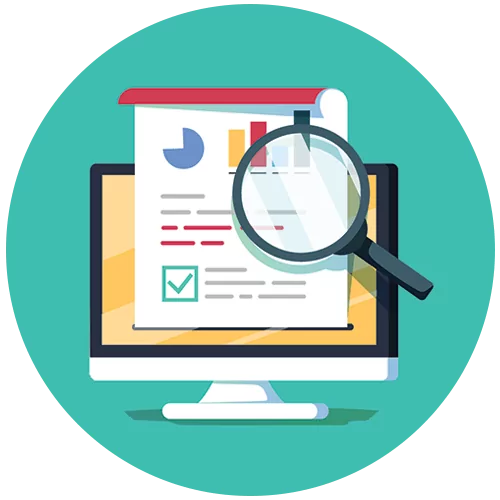
Especially for C-level managers, defining marketing strategies in this era of uncertainties is merciless and scary; it kind of feels like being a boxer whose eyelid is bleeding, brow split open, jaw dislocated, waiting for the next move without knowing where it will come from. If you cannot predict where the next punch will come, how can you create an effective and working marketing strategy?
The only certain thing is that change is inevitable. The most durable among us – those who survive – are those with the flexibility and agility to adapt to all conditions, at any time. Nature (and markets) will be so cruel to those who resist!
So, what do we know?
We know that both traditional marketing and digital marketing will continue to change and develop. “Agility” is the term used to describe a style of work that was mostly embraced by IT teams – but now, this concept has spread through all functions of organizations, from marketing to operations. 2023 will be a hard year for marketers where they will be subjected to a test of agility.
At Next4biz, after interviewing hundreds of organizations throughout the year and participating in thousands of marketing projects, our teams have prepared a visionary list that compiles our predictions for 2023 to help you navigate the year. From interaction management in marketing to customer experience management, here are the predicted main trends of 2023 from a holistic perspective.
Looking to Define Your Marketing Strategies?
Here are the strategies we’ll focus on most in 2023:
1. Great Convergence of Theory and Practice
All marketers have the same problem: GROWTH! Actually, the main reason for that is economic uncertainty. If it was not for uncertainty, would we try so hard to continue the endless battle to gain new customers with such enthusiasm? (Probably not.)

You have to know what gets your customers moving. What email content triggers your customers to click? Which video of yours most often directs your customers to reach out to your call center? Which digital ad prompts your customers to tour your site? Which campaign awakens customers who haven’t been interacting with your brand? You have to know the effect of your content and be able to measure its results. The results you achieve will be the main source of your strategy. Therefore, your most important investment in 2023 will be in analyzing your marketing in an integrated fashion by gathering static and dynamic transactional customer data in a single platform. We also need to think about the reason behind the importance of integrated and deduplicated customer data.
Data analytics is the driving force behind effective marketing strategies. To do data analytics successfully, you should start by using the right marketing technology that will deduplicate your customer data as soon as possible, then proceed with treating this data via in-depth analyses and follow the footprints – especially the digital ones – of your customers more closely. Customers’ ever-changing interests and behaviors demand a stronger link between consistent data analytics and practical marketing applications, thus making it obligatory to bridge the gap between theory and practice.
2. Time to Be Accountable!
As marketers, we all know how critical the customer experience is for potential and existing customers, right? Okay then, now it’s time to prove that! If we’re so sure about the impact of customer experience on acquisition and retention, we have to show it in numbers. You need to prove the impact of any step you take to improve the customer experience.
But to what extent can you measure your investment in experience management?
We all know that, unfortunately, many marketers these days cannot prove the ROI for their projects in the customer experience field. In fact, according to Forrester, over 50% of marketers are unable to do this! The oncoming implications of this situation are clear: while the projects with measurable investment returns and predictable results will get approval, those that cannot be measured will not. In that case, it becomes critically important to be able to measure the investment returns of any kind of campaign conducted by marketers.

First of all, the marketing management application(s) you use should be able to measure this for you.
- Which campaigns did you run each week?
- What were the design/implementation costs of your campaigns?
- How much positive customer feedback did you receive from each campaign?
- What is the rate of sales opportunities generated per campaign?
- What is your average turnover per sale?
If you can manage marketing, sales and customer service management in an end-to-end integrated CRM platform and measure all parameters of applications in this field with filters that can be customized for every step of the application, you will be able to measure ROI for all your marketing activities.
This makes it easier for you to determine which steps of the customer journey deliver greater returns. If you include the effects of your re-marketing efforts in this experience process, you can determine the ROI rate of experience applications from a holistic perspective.
3. Engage with Your Customers
Welcome to the 3rd Age of “Care and Establish Emotional Connection”!
In times of intense competition and economic uncertainty, the most difficult challenge marketers face is differentiating their products and services. Especially in today’s world, where the speed of information dissemination has become incredibly fast, being “different” is a medal you can wear for only a limited time before others catch up.
So if “being different” is such a hard-won and fickle title, as marketers, what should we do on the road to the heart of our customers? What kind of strategy should we follow?
As human beings, are not our biggest expectations of each other to be cared for? As marketers, we should embroider this fact into the souls of our products and services.
-
-
-
- How much do your products actually show care for your customers?
- How much do you value your customers?
- How important is the information security of your customers to you?
- While asking for and using their personal data, to what extent do you obtain their explicit consent and approval?
- Do your customers feel that they are important in your eyes?
- Or are they only one of thousands or millions of other customers?
-
-
Do you find yourself thinking that if you lose one, another will come to take their place?
Be careful of that kind of thinking!
As human beings, customers (i.e., all of us) expect to be cared about by the brand and also expect a relationship with the brand founded on trust. Trust is like a crystal ball - easily broken but impossible to repair.Whatever your customers experience with your brand serves as the basis for a trusting (or distrustful) relationship.
Especially in turbulent times that lack stability, everyone wants to stay in their safe ports. In difficult conditions, customers prefer to work with brands that they know and are familiar with.
In 2023, in the clear agreements you will make with your customers, you should prove to them:
-
-
-
-
- for what purpose you will use their data,
- that you will use the data they entrust to you as a tool to facilitate the personalization of services to be provided to them, and
- that the confidentiality of this data is under your protection in all situations, guaranteed.
-
-
-
4. Transition from Micro-Segmentation to Hyper-Segmentation
It’s obvious that we’ve started to focus more on personalization in content and applications. However, separating customers into micro-segments and implementing a “common” campaign for each customer group is now being dethroned in favor of a more aggressive segmentation discipline: hyper-segmentation!
So what is this hyper-segmentation?

Thanks to hyper-segmentation, brands can better understand their target customers and organize creative campaigns with more engaging and effective marketing content. They are also able to create specific products and services in accordance with the special needs of each segment.
Hyper-segmentation can be made possible with the use of advanced data analytics tools such as machine learning algorithms. These tools are solutions that help the organization to define and understand the characteristics and behaviors of their target segments. In recent times, artificial intelligence applications, which utilize learning machine technologies together with segmentation, targeting, categorization, etc., have made it possible to develop pinpoint marketing strategies.
5. Embrace Gen Z
The children of the new millennia have now become the young adults of today. This digital-born generation has begun to take its place in the business world and the resulting transformation in culture has started to affect how organizations do business in nearly every sector.
For Gen Z, the internet exists on social media platforms, not search engines. The representatives of this generation prefer to follow “tags” on social media platforms instead of surfing search engines, and they tend to heed the advice of the pioneers of these platforms (independent influencers) instead of traditional brand spokespersons. The information overload caused by the ease of access to information and the deep void many members of Gen Z fall into as a result brings anxiety and insecurity. The most effective way to reach this generation is to “show, not tell” because, for these young people, seeing is believing.
For this reason, especially for Gen Z, the user-created content is the most precious source of building trust. The most valid forms of this are independent bloggers, YouTube channels, and Instagram creators who upload short explanation videos.
In 2023, this change will drive all marketers to use more content from “real” user experiences. Thanks to this, traditional advertisements are losing their plausibility and will slowly give way to the comments and power of the “real user” influencers.
While it is hard to make pinpoint predictions in the marketing field, based on the interviews we’ve conducted throughout the year with decision-makers for corporate clients for whom we perform marketing activities, we can share these 5 predictions for the near future. Specifically taking into account the effect of technological developments, economic conditions and sociocultural trends, we can say that we are in an important transformation period in the marketing field. In this transformation, those who invest in the correct tools and adapt to the rapid change will reap the benefits and succeed.

